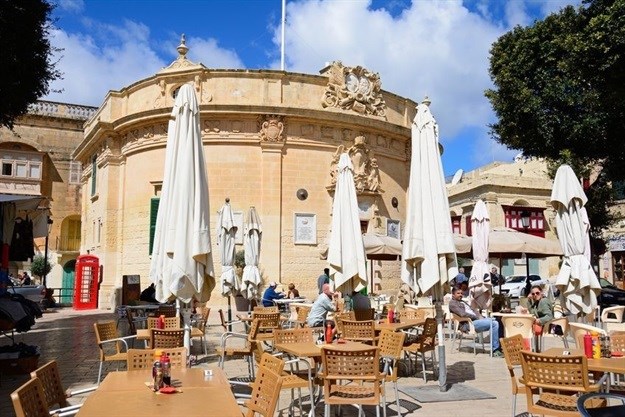
Top stories


Marketing & MediaThe Carling Black Label Cup and the campaign that changed fan engagement
Caxton Media 3 hours




More news

ESG & Sustainability
Kumba Iron Ore champions inclusivity with donation to neurodiverse learners














A seasonal negotiable
In South Africa, I never really experienced summer as being different to winter. I’m not talking about temperature or rainfall, I’m talking about shake-the-rafters different. In SA, we went to work – and left work – at the same times in summer and winter. Productivity and work ethic was not a seasonal negotiable.
Here in Malta, the big three months of summer – July, August and September – are nothing like the rest of the year and give rise to uniquely Mediterranean, if not uniquely Maltese lifestyle experiences.

Although the supermarkets and larger retailers and/or showrooms are open from morning to night year round, most of the corner shopkeepers in the villages keep siesta hours. That means 8am until 12pm, then a four-hour lunch break and a reprise in the late afternoon from 4pm until 7pm. A lot of office workers and public servants have specific summer hours (e.g. town councils and public libraries open at different times during the year, depending on whether it’s summer or winter).
I am starting to get the sense that a lot of tradespeople actually shut down during the summer months and take off several weeks to relax by the seaside. Remember in Malta, due to its island geography, you are never more than 15 minutes from the sea. This observation is validated by constant references to Maltese families going to spend the summer in their seaside places. Although this implies that everybody here has a holiday house, that would be stretching the truth.
Although it is evident that most Maltese people we meet own multiple properties (since property ownership is a cornerstone of the local culture and Maltese investment strategy), the 'holiday places' are anything but homes. Instead, they could be anything from a caravan to a garage to a boathouse to a one-room shack. Many beaches have signs prohibiting caravans, but the locals settle in with their awnings and plastic deck furniture anyway. Social media was abuzz earlier this month with images of two blokes mixing cement on a rocky peninsula in order to fix their umbrella stand!
In South Africa with its distances, it was not unheard of for families to camp at the seaside for weeks at a time. Thirty years ago, I was invited to join a varsity friend’s family on their annual pilgrimage to Sodwana Bay where they would set up a major campsite during the Christmas holidays. My partner recalls with less fondness the many weeks only washing in seawater, when as a child his family used to trek to the Transkei for a couple of months for their annual holiday.
So although I understand the adventure of packing your family up and roughing it at the coast for several weeks at a time, it seems a little strange when your Maltese home – with airconditioning, hot and cold running water and flushing toilets – is only a quarter of an hour away.

The second otherworldliness about summer on Malta is the number of tourists – more than double the islands’ 475,000 population. It has been postulated that Malta’s tourism growth is as a result of social media – a stream of Instagram and Facebook pics of pretty beaches and sunny coastlines has moved the journey from online envy to on-the-island experience propagation.
I surmise that the social media culture of sharing has effectively meant that there are no hidden spots left on the archipelago. I went sunbathing at my secret little cove today – an unobtrusive, un-signposted little cove that had taken me many weeks to find – and was astounded that I had two French girls to the right of me and three Germans to the left. Don’t look at me – I certainly hadn’t posted anything!
Back at MIA last month the airport managed an average of 156 takeoffs and landings per day.
The 14,6% growth in passenger numbers was in line with a 15.1% increase in aircraft movements and a 14.4% improvement in seat capacity.
Most of the airport’s top markets registered significant growth, particularly Spain which registered an increase of 49.1%. This was the result of the introduction of three new routes to Malaga, Seville and Bilbao, as well as an enhanced flight frequency to Barcelona.
The flip side of the coin? Every new route that opens bringing in more summer tourists, means a new outbound destination for us with direct flights and low-cost carriers!
